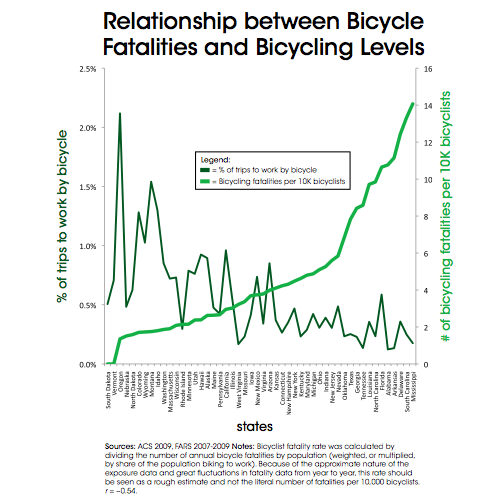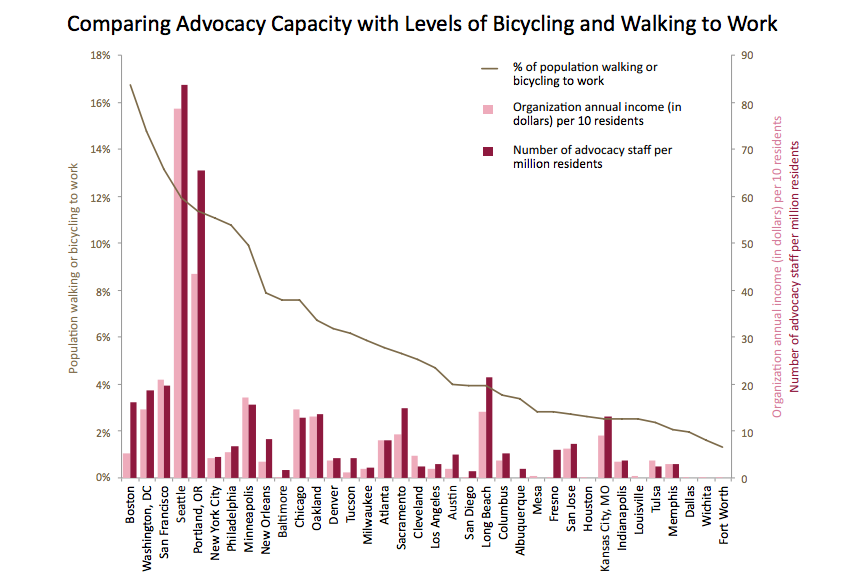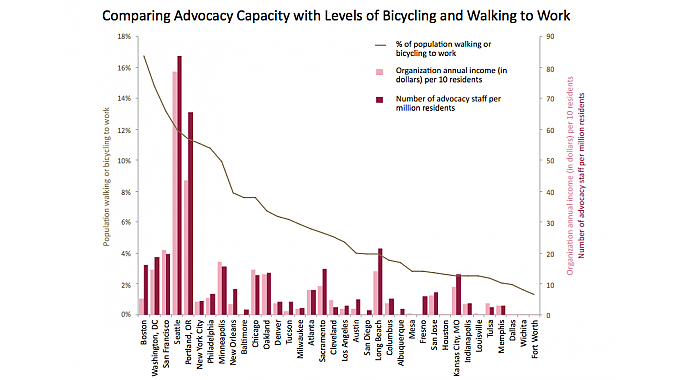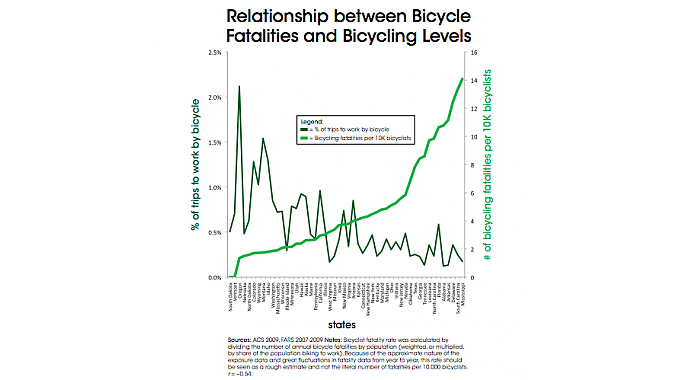WASHINGTON (BRAIN) — Commuters are slowly but steadily switching to walking or biking to get to work, and the more people who walk or bike, the safer they all are.
Those are two of the conclusions from the 2014 Benchmarking Report published by the Alliance for Biking & Walking. The report, published every two years since 2003, is one of the Alliance’s key initiatives and is now available for download from the group’s website.
The report is compiled from data from all 50 states, the 52 largest cities and, for the first time in this report, 17 midsize cities. It looks at the rate of walking and biking, accident and injury rates, the level of spending on biking and walking projects and issues, and the level of advocacy support in various regions and communities.
A key figure is the percentage of commuters who bike or walk to work, and although the number is still tiny, the report shows a steady increase: In the 2005-2006 report, the Alliance showed that nationally 0.4 percent of the population biked to work. In the latest report, the number is 0.6 percent. In large cities, the percentage biking to work has grown from 0.7 percent to 1 percent over the same period.
The 268-page report breaks down those figures by state and city, and looks at how they are influenced by age, gender, climate, household income, population density, transportation spending, advocacy levels and other factors.
One reality emerges from the data: There are lower rates of cyclist and pedestrian fatalities where there are more people are biking and walking.

The report also shows that more people tend to bike or walk to work when a city has strong biking and walking advocacy. This is illustrated in a chart showing a positive correlation between the number of people who bike and walk to work in a city and the incomes and staff sizes of those cities' biking and walking advocacy organizations.
The full report is available free for download from the Alliance website.






